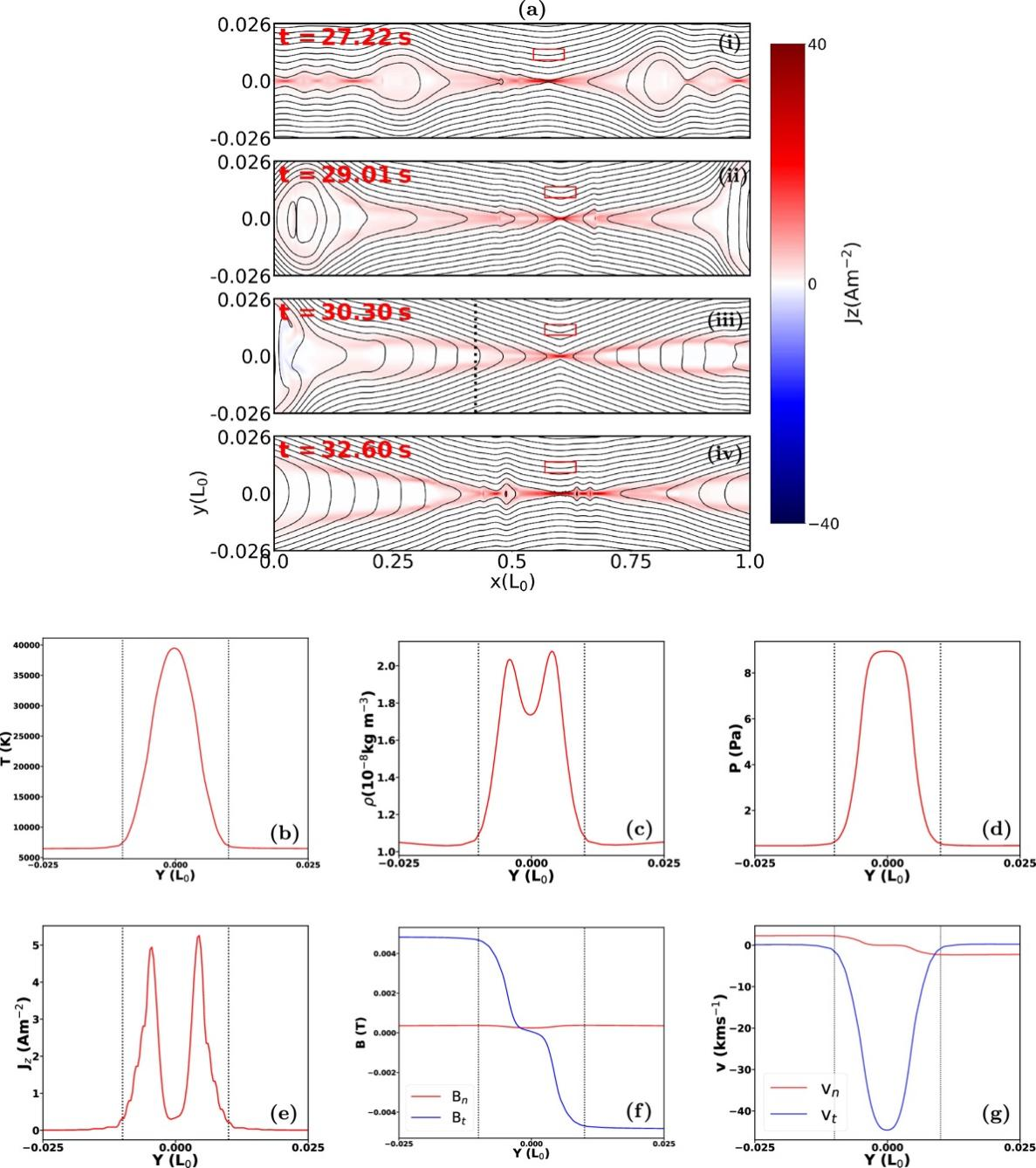Researchers from the Yunnan Observatories of the Chinese Academy of Sciences, including Dr. Abdullah Zafar, Prof. NI Lei and Prof. LIN Jun have discovered the faster dynamic Petschek-like magnetic reconnection in the partially ionized lower solar atmosphere, based on magnetohydrodynamic (MHD) simulations. Their research paper, titled "Unravelling the Trigger Mechanisms of Explosive Reconnection in Partially Ionized Solar Plasma", has recently been published in the Astrophysical Journal.
Magnetic reconnection refers to the process in a magnetized plasma where the magnetic field topology changes, converting magnetic energy into plasma kinetic energy, thermal energy, and accelerating high-energy particles. Magnetic reconnection can explain various phenomena of magnetic energy release throughout the universe. In the partially ionized lower atmosphere of the Sun (photosphere and chromosphere), magnetic reconnection triggers many transient events such as Ellerman bombs (EBs), ultraviolet (UV) bursts, chromospheric jets, and campfires, which are major sources of solar atmospheric heating.
A key issue in the field of magnetic reconnection is determining how fast the reconnection process proceeds. The reconnection rate proposed by the Sweet-Parker model is proportional to the inverse square root of the Lundquist number (S). In large-S environments, Sweet-Parker reconnection rates are too small to account for observations. In contrast, the Petschek reconnection rate is nearly independent of S and can explain observed rates, but the steady-state Petschek configuration cannot be sustained without enhanced local resistivity. MHD simulations suggest that plasmoid instabilities occur in high-S systems, resulting in a fragmented current sheet and a high reconnection rate on the order of 0.01. However, this rate is still an order of magnitude lower than the maximum observed rates, which are on the order of 0.1.
This work employed single-fluid radiative MHD simulations to study the dynamic reconnection processes at various altitudes in the partially ionized lower solar atmosphere, from the photosphere to the base of the corona.
The simulation results showed a sudden drop in plasma temperature and density at the main X-point during the reconnection process, associated with intense radiative cooling, the ejection of hot plasma near the X-point, or the motion of the X-point from a hot, dense area to a cooler, less dense area. This significant decrease in temperature and density led to a reduction in pressure and an increase in magnetic diffusivity at the X-point, which consequently triggered dynamic Petschek-like reconnection, which occurred after plasmoids were ejected out from the reconnection current sheet.
This study was the first to demonstrate the physical process in a partially ionized environment where reconnection transitioned from plasmoid-mediated to explosive faster dynamic Petschek-like reconnection. The maximum reconnection rates reached above 0.06, approximately three times larger than the plasmoid-dominated rate. The dynamic Petschek-like reconnection and the reconnection dominated by plasmoid instabilities alternated throughout the reconnection process.
This research revealed the physical mechanisms of eruptive fast magnetic reconnection in partially ionized solar plasma and achieved a reconnection rate close to the fastest observed values. These findings will also help us to understand the mechanisms of rapid magnetic energy release in other partially ionized environments, such as interstellar media, protoplanetary disks, and laboratories.

Figure 1: The time evolutions of reconnection rates: (a) cases with different initial magnetic perturbations and the same initial plasma-β; (b) cases with different initial plasma-β values and the same magnetic perturbation; (c) cases from the photosphere to the top of the chromosphere, showing variations at different altitudes under the same initial plasma-β and the same magnetic perturbation.Image by Zafar.

Figure 2: (a) The two-dimensional distribution of magnetic fields (solid lines) and current density (Jz) (background color) in a typical simulation case at four different time; (b)-(g) The figures show distributions of several plasma variables along the vertical dotted black line from panel a(iii). The black dotted vertical line passes through the wave fronts of a pair of slow-mode shocks on the left side of the current sheet. Image by Zafar.
Contact:
Abdullah Zafar
Yunnan Observatories, CAS
E-mail: abdullah@ynao.ac.cn